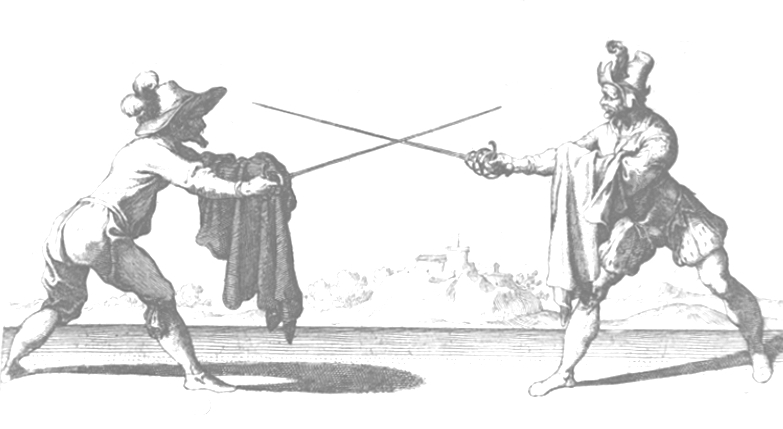I found this article.
Rapier and cloak
Another off-hand weapon that would have been easily at hand to a Renaissance duelist was the cloak. DiGrassi advocated the use of the cloak for rapier fighting and maintained that it could be a very effective tool. However, using a cloak may be a boon or a bane. Fighting cloaks should be made out of stiff material and should be smaller than larger in size. A late 16th or early 17th Century cape would be appropriate. The cape should be sturdy enough to withstand the abuse of being cut or thrust with a rapier. DiGrassi maintained that three things must be considered in using the cloak: its length, largeness and flexibility.
"The use whereof was first found out by chance and after reduced into art. Neither was this for any other cause, then for that nature doth not only delight to invent things, but also to preserve them being invented. And that she may the better do it, she taketh for her help all those things that are commodious for her. Wherefore, as men in diverse accidents have casually proved, that the Cloak helpeth greatly (for as much as they are to wear it daily) they have devised how they may behave themselves in all that, in which the Cloak may serve their turn. . .
As the Cloak in this Art, hath in it three things to be considered, to wit: length, largeness, and flexibility: so it is to be wayed how far each of these will stretch, to serve the turn."
The cloak, although not a strong thing in and of itself, lends itself to defense because of its very nature. Being long, it may guard against cuts to the side. Being flexible, it will absorb the strength of the blow. It may also be used to turn a thrust to the side or to entrap the blade.
Typically the cape is held either by the collar or at one edge close to the hem. In the on guard it should be held out from the body and should drape down from the hand. If you have a long cape or cloak you may fold the cloak once or twice around the hand and forearm. You must assure that you do not obscure your sight with the cloak. This can prove to be a deadly maneuver. The cloak may also be worn when being employed for defense. In this instance you would grab the cloak by the hem and use it almost as a shield.
A point to remember in these cases is that the flexibility of the cloak is what protects. If a cut lands on a cloak that is against a solid surface (i.e. your arm, leg or flank) the protection is lost and you will be cut through the cloak.
The cloak may also be used offensively. Holding the cloak by the collar or hem it may be used to entangle a blade or beat it to the side giving you the time to offend your opponent. It may also be thrown over your opponent's head thus blinding them temporarily. Throwing the cloak is dangerous in that you may lose it and not accomplish your aims. It may also be twirled or flicked at your opponent to confuse them. They will not know if you are trying to blind them with a throw or are maneuvering to entangle their blade.
Comes from the website:
http://www2.nau.edu/~wew/rapier.htm
Cheers
John






 Damn Punks with their switchblades!
Damn Punks with their switchblades! for the Docken leaf
for the Docken leaf 